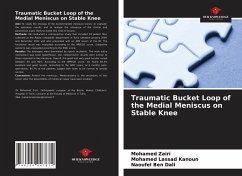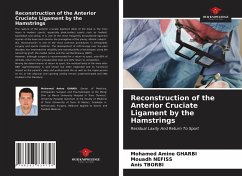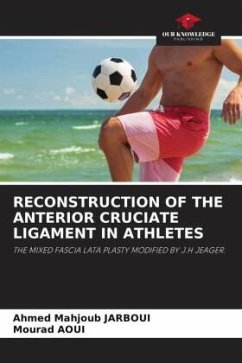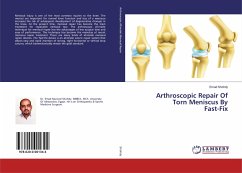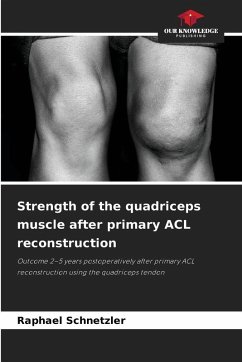
INJURIES TO THE MEDIAL MENISCUS RAMP IN ATHLETES
PREVALENCE, DIAGNOSISAND TREATMENT
Versandkostenfrei!
Versandfertig in 6-10 Tagen
29,99 €
inkl. MwSt.

PAYBACK Punkte
15 °P sammeln!
Introduction:The association of medial meniscal ramp lesions with rupture of the anterior cruciate ligament is underestimated.This lesion draws its specificity partly because of the diagnostic and therapeutic difficulty and partly because of the repercussions on knee stability.Methods :Systematic exploration of the posterior horn of the medial meniscus was performed in all patients. Surgical repair of the medial meniscal ramp lesion was performed using the ALL INSIDE method.Results:The mean age of our series was 24 years. A medial meniscal lesion was found in 42 patients (40%), including 10 me...
Introduction:The association of medial meniscal ramp lesions with rupture of the anterior cruciate ligament is underestimated.This lesion draws its specificity partly because of the diagnostic and therapeutic difficulty and partly because of the repercussions on knee stability.Methods :Systematic exploration of the posterior horn of the medial meniscus was performed in all patients. Surgical repair of the medial meniscal ramp lesion was performed using the ALL INSIDE method.Results:The mean age of our series was 24 years. A medial meniscal lesion was found in 42 patients (40%), including 10 medial meniscal ramp lesions, i.e. a prevalence of 9.5% in our population.At last recoil of patients who had a suture for medial meniscal ramp lesions, ARPEGE scoring showed 100% good results.Conclusions:Liberation of the medial compartment of the knee and systematic arthroscopic exploration postero-medially before any ligamentoplasty is the only guarantee of not overlooking an injury to the medial meniscal ramp, the repair of which is imperative in order to avoid residual laxity.





